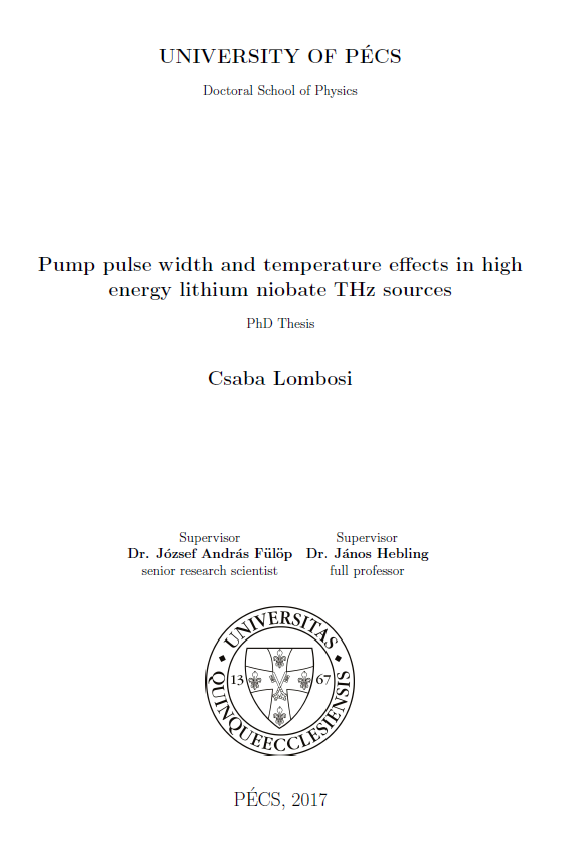Pump Pulse Width and Temperature Effects in High Energy Lithium Niobate THz Sources
Abstract
Intense terahertz source development in the last decade allowed the growth of new areas
of research. Tilted-pulse-front pumping of inorganic LiNbO3 (LN) shows good
characteristics to achieve the highest possible pulse energies below 1 THz. Ultrafast
carrier dynamics of semiconductors were measured by THz pump - THz probe
measurements, molecule alignment with an intense field and electron wave streaking
were also demonstrated. THz-assisted attosecond pulse generation, would
also benefit from intense terahertz pulses. The above mentioned applications require
peak electric fields on the order of 100 kV/cm. However, newly emerging areas as
acceleration, longitudinal compression, and undulation of relativistic electron bunches, post-acceleration of laser-generated proton and ion beams with potential applications
for hadron therapy, multispectral single-shot imaging, THz-enhanced
attosecond-pulse generation with increased cut-off frequency would benefit from
field strengths higher than currently provided. Multi-mJ and multi-10-MV/cm level
sources are needed for these applications.
Today extremely high field strengths up to 100 MV/cm are available only in the frequency
range above 10 THz. Although the mentioned applications would highly
benefit from low frequency THz sources, so that longer wavelength is preferably matching
typical transversal sizes of particle beams, pulse energies and peak electric fields
necessary for these applications is presently not available. Therefore, it is a priority
to optimize THz pulses generated by optical rectification of fs laser pulses with
tilted-pulse-front pumping in lithium niobate. Theoretical studies predict
an increase in effciency with optimization of pump pulse duration and cryogenic cooling
of LN source crystal.

